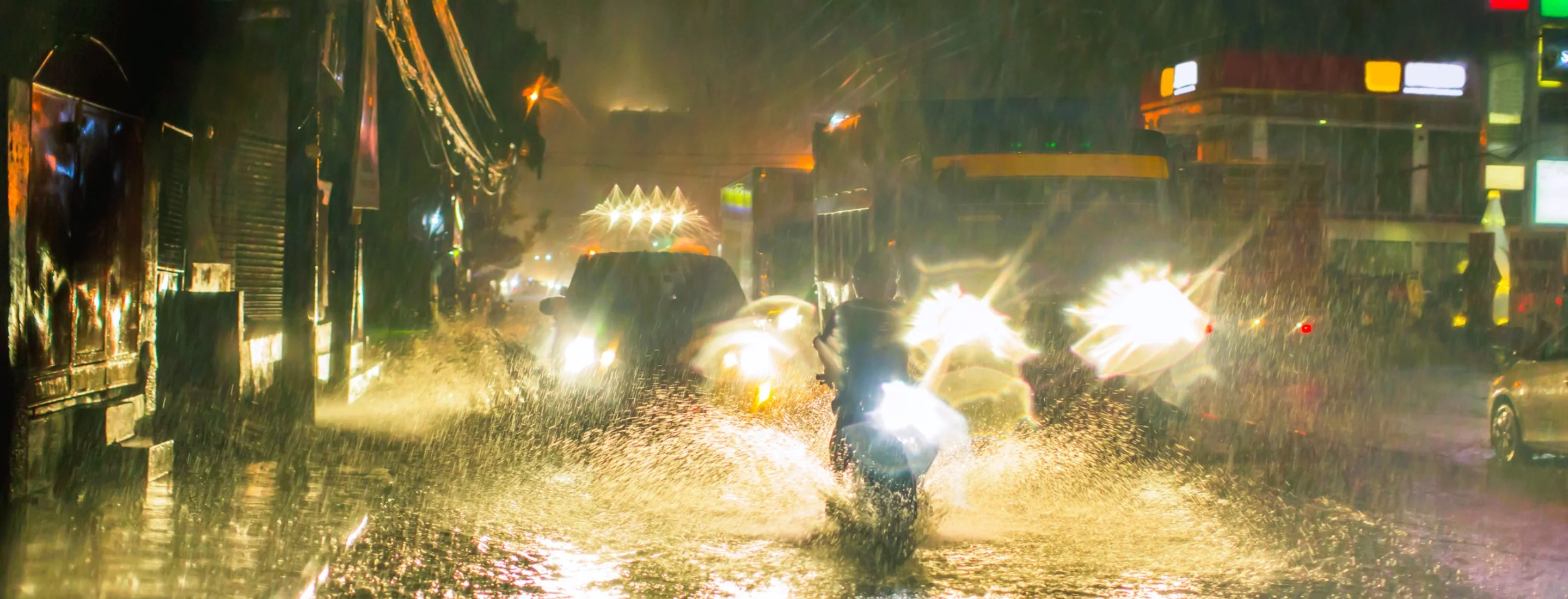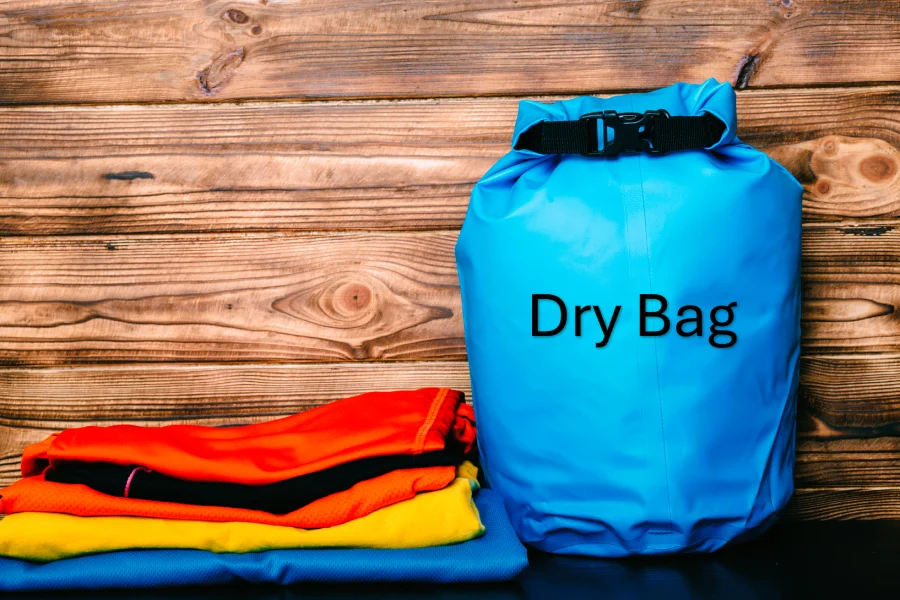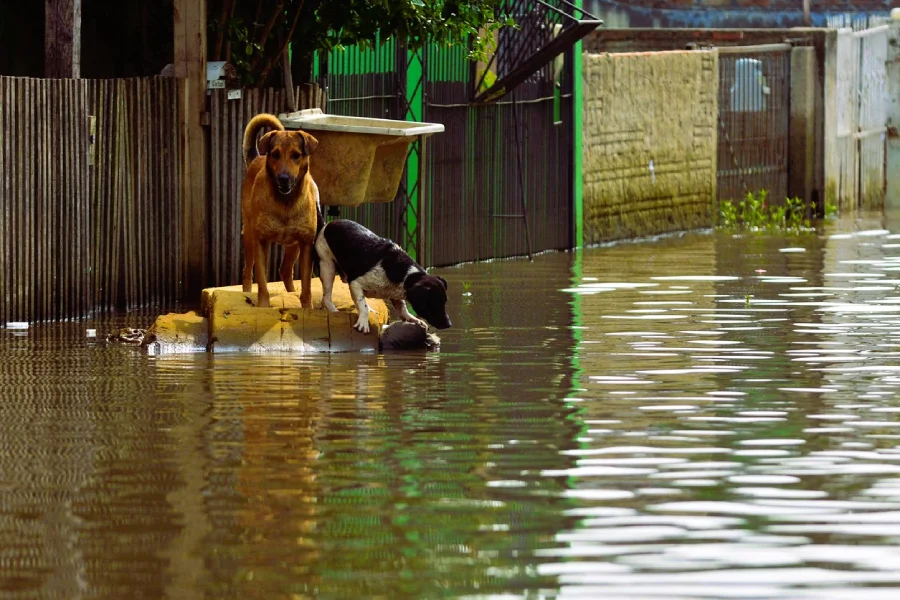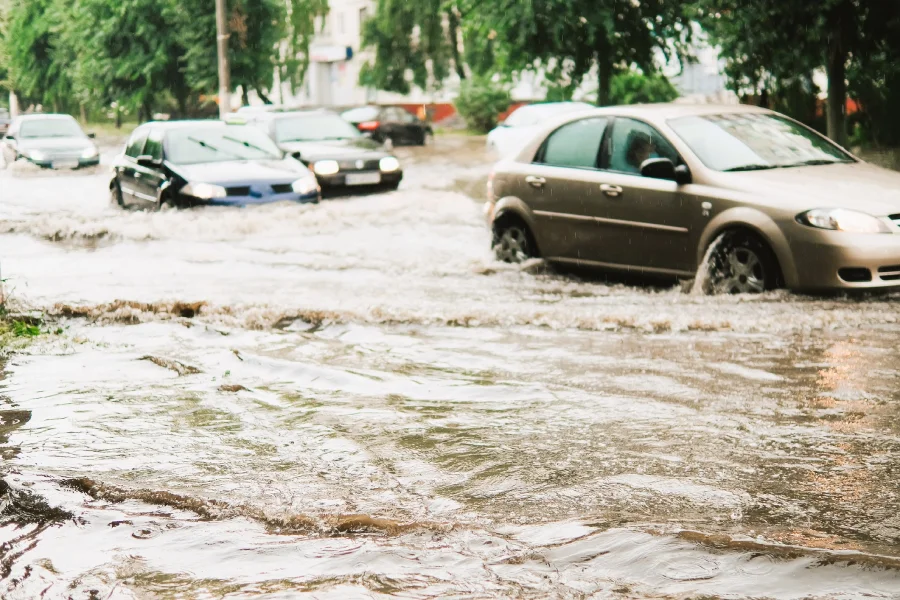
Essential Survival Guide for Typhoons and Floods
The Philippines, nestled in the western Pacific Ocean, is no stranger to the fury of nature. It grapples with an average of 20 typhoons each year, a consequence of its geographical position along the typhoon belt. These natural calamities bring forth strong winds and heavy rainfall, leading to widespread flooding and significant damage. Hence, it’s crucial for residents to embrace disaster preparedness to mitigate the impacts of such events on their lives and property.
Learn about effective strategies before, during, and after typhoons and floods, aiming to safeguard human and pet lives alongside securing essential documents and valuables.
Table of Contents:
- Before the typhoon: Preparation is key
- During the typhoon: Safety measures
- Commuting and driving through flooded areas
- After the storm: Dealing with the aftermath
- Stay safe, stay prepared
- Typhoon emergency hotlines in the Philippines
Before the typhoon: Preparation is key
Know the risks
Understanding the risks associated with typhoons and floods is the first step towards effective preparedness. The Philippine Atmospheric, Geophysical and Astronomical Services Administration (PAGASA) provides critical weather updates and advisories. Regularly monitoring their bulletins can help anticipate and prepare for incoming storms.
Home safety measures
Reinforce your home by checking for any necessary repairs. Secure loose outdoor items, trim branches near the house, and install storm shutters to protect windows. Clear drainage systems to prevent waterlogging.
Emergency supplies
Prepare an emergency kit containing enough food and water to last for at least 72 hours, flashlights, batteries, a first-aid kit, and essential medicines. Don’t forget hygiene supplies and special needs for infants, the elderly, and family members with health conditions.

Communication plan
Create a family communication plan. Ensure every member knows what to do and where to go in case of evacuation. Designate a family meeting spot outside your neighborhood if you get separated.
Important documents and valuables
Assemble a go-pack for each family member, including copies of important documents (IDs, birth certificates, land titles), a small amount of cash, and valuables. Place these in waterproof containers and ensure they are easily accessible in an emergency.

During the Typhoon: Safety measures
Stay informed
Monitor weather updates regularly. A battery-powered radio can be invaluable if the power goes out.
Water and electricity
Turn off the main power switch and unplug electrical items to avoid damage from power surges. If flooding is imminent, you may need to shut off the water supply to prevent contamination.
Evacuation
Heed local authorities' evacuation orders without delay. Keep your go-pack handy, wear sturdy shoes, and move to a designated evacuation center or higher ground if in flood-prone areas.
Stay indoors
If evacuation is not necessary, stay indoors away from windows and doors. Move to the strongest part of the house and stay on the ground floor if there’s a risk of strong winds. If there is a risk of flooding, move to higher ground and don’t hesitate to evacuate when necessary.
Keeping everyone safe, including pets
Pet owners should include animal needs in their preparation plans. This includes pet food, carriers, and medications. Ensure pets have identification and consider their needs when selecting an evacuation site. Do not leave them behind leashed or inside their cages, especially should the need to evacuate arise.

Commuting or driving in flooded areas
If you’re caught in moving floodwaters while commuting or driving, here are some important steps to follow:
1. Head to higher ground
Immediately move to higher ground if you can do so safely. Avoid walking through floodwaters. Just 6 inches of moving water can knock you down. Do not attempt to cross flooded areas and stay away from fast-flowing water which can sweep you away. Avoid electrical powerlines.
2. Don’t drive through floodwaters
It’s difficult to judge the depth and current of floodwaters. Just 6 inches of water can cause your car to stall. About 12 inches of water can float a car, and 2 feet of rushing water can carry away most vehicles. If you see a flooded road ahead, turn around and find an alternate route.
3. Abandon your vehicle if needed
If floodwater is surrounding your vehicle and it’s safe to do so, leave the vehicle immediately. Unbuckle your seatbelt and roll out your window. If your door is stuck due to water pressure building up from outside, break your window and let the water flow freely to equalize the pressure so you can open the door and swim out.
4. Stay informed
Use your car radio or mobile device to listen to emergency broadcasts and updates from local authorities.
5. Call for help
If you’re stranded and have a working phone, call local emergency services.
6. Stay visible
If you’re stranded in your vehicle, turn on your hazard lights or use a distress flag to make yourself visible to rescuers.

After the storm: Dealing with the aftermath
After a typhoon or flood, ensuring the safety of yourself and those around you is the priority. Additionally, beginning the process of recovery and damage assessment is crucial. Here are some steps to take once the event has passed:
1. Ensure safety
First, verify that it is safe to move around or return to your home. Stay tuned to local news or official announcements for any safety instructions. Avoid driving or walking through flooded areas; just a few inches of moving water can knock you down, and vehicles can be swept away.
2. Inspect for damage
Check your home and property for damage. Be cautious of potential hazards such as gas leaks, electrical shorts, and structural damage. Do not enter your home if you smell gas, see floodwater on the property, or if the home was damaged by fire and authorities have not declared it safe.
3. Document damage
Take photos and videos of the damage before cleaning up. This is crucial for insurance claims and financial assistance applications. Keep a record of all damages and any repair costs incurred.
4. Contact insurance
As soon as possible, contact your insurance company to report your damages. Provide them with documentation of the damages and follow their instructions regarding the claims process.
5. Clean up safely
When cleaning up flood damage, wear protective clothing, including rubber gloves and boots. Be mindful of the risk of injuries and infections from contaminated water and debris. Ensure proper ventilation if using generators or cleaning chemicals to avoid inhaling toxic fumes.
6. Seek assistance
If needed, reach out for government or community assistance. Several organizations provide aid after natural disasters, such as food, water, and temporary shelter. Keep a list of emergency hotlines and contact numbers handy for easy access.
7. Health and Wellness
Pay attention to the emotional and physical well-being of yourself and those around you. Disasters can be traumatic, and seeking support from community services, family, and friends can help in the recovery process.
Stay safe, stay prepared.
The aftermath of typhoons and floods can be devastating, but with preparedness and awareness, their impacts can be significantly mitigated. By taking proactive steps before, during, and after these natural disasters, you can protect your family, pets, and property. Remember, the key to disaster resilience lies in preparation, timely action, and community solidarity.
Just as we prepare for natural calamities like typhoons and floods, it’s equally crucial to be ready for life’s unpredictable storms. Life insurance serves as a safety net, providing financial security and peace of mind in the face of life’s uncertainties. It ensures that our loved ones are taken care of, much like how a well-stocked emergency kit can provide essential supplies during a natural disaster. In essence, both preparation for natural disasters and having life insurance embody the same principle: foresight and planning today can mitigate the hardships of tomorrow. Thus, being prepared, whether for nature’s fury or life’s unpredictability, is not just beneficial—it’s essential.
TYPHOON EMERGENCY HOTLINES 𝗡𝗔𝗧𝗜𝗢𝗡𝗔𝗟 𝗘𝗠𝗘𝗥𝗚𝗘𝗡𝗖𝗬 𝗛𝗢𝗧𝗟𝗜𝗡𝗘 - 911 𝗣𝗛𝗜𝗟𝗜𝗣𝗣𝗜𝗡𝗘 𝗥𝗘𝗗 𝗖𝗥𝗢𝗦𝗦 𝗡𝗔𝗧𝗜𝗢𝗡𝗔𝗟 𝗗𝗜𝗦𝗔𝗦𝗧𝗘𝗥 𝗥𝗜𝗦𝗞 𝗥𝗘𝗗𝗨𝗖𝗧𝗜𝗢𝗡 𝗔𝗡𝗗 𝗠𝗔𝗡𝗔𝗚𝗘𝗠𝗘𝗡𝗧 𝗖𝗢𝗨𝗡𝗖𝗜𝗟 (𝗡𝗗𝗥𝗥𝗠𝗖) 𝗣𝗔𝗚-𝗔𝗦𝗔 𝗗𝗘𝗣𝗔𝗥𝗧𝗠𝗘𝗡𝗧 𝗢𝗙 𝗦𝗢𝗖𝗜𝗔𝗟 𝗪𝗘𝗟𝗙𝗔𝗥𝗘 𝗔𝗡𝗗 𝗗𝗘𝗩𝗘𝗟𝗢𝗣𝗠𝗘𝗡𝗧 𝗣𝗛𝗜𝗟𝗜𝗣𝗣𝗜𝗡𝗘 𝗡𝗔𝗧𝗜𝗢𝗡𝗔𝗟 𝗣𝗢𝗟𝗜𝗖𝗘 𝗛𝗢𝗧𝗟𝗜𝗡𝗘 𝗣𝗔𝗧𝗥𝗢𝗟 𝗕𝗨𝗥𝗘𝗔𝗨 𝗢𝗙 𝗙𝗜𝗥𝗘 𝗣𝗥𝗢𝗧𝗘𝗧𝗜𝗢𝗡 (𝗡𝗖𝗥) 𝗣𝗛𝗜𝗟𝗜𝗣𝗣𝗜𝗡𝗘 𝗖𝗢𝗔𝗦𝗧 𝗚𝗨𝗔𝗥𝗗 Trunkline: (02) 527-8481 to 89 𝗠𝗘𝗧𝗥𝗢 𝗠𝗔𝗡𝗜𝗟𝗔 𝗗𝗘𝗩𝗘𝗟𝗢𝗣𝗠𝗘𝗡𝗧 𝗔𝗨𝗧𝗛𝗢𝗥𝗜𝗧𝗬 Hotline:136
𝗗𝗘𝗣𝗔𝗥𝗧𝗠𝗘𝗡𝗧 𝗢𝗙 𝗖𝗢𝗠𝗠𝗨𝗡𝗜𝗖𝗔𝗧𝗜𝗢𝗡
𝗠𝗔𝗡𝗜𝗟𝗔 𝗜𝗡𝗧𝗘𝗥𝗡𝗔𝗧𝗜𝗢𝗡𝗔𝗟 𝗔𝗜𝗥𝗣𝗢𝗥𝗧 𝗔𝗨𝗧𝗛𝗢𝗥𝗜𝗧𝗬 Text Hotline: 0917-839-6462 (TEXTNAIA) For more information and updates, visit the official website of PAGASA (pagasa.dost.gov.ph) and the National Disaster Risk Reduction and Management Council (NDRRMC) (ndrrmc.gov.ph). |


.webp)

